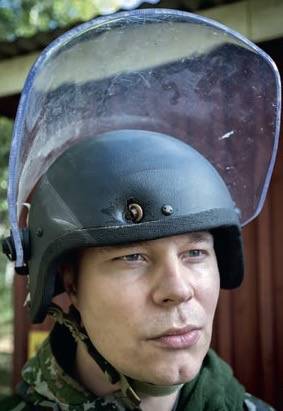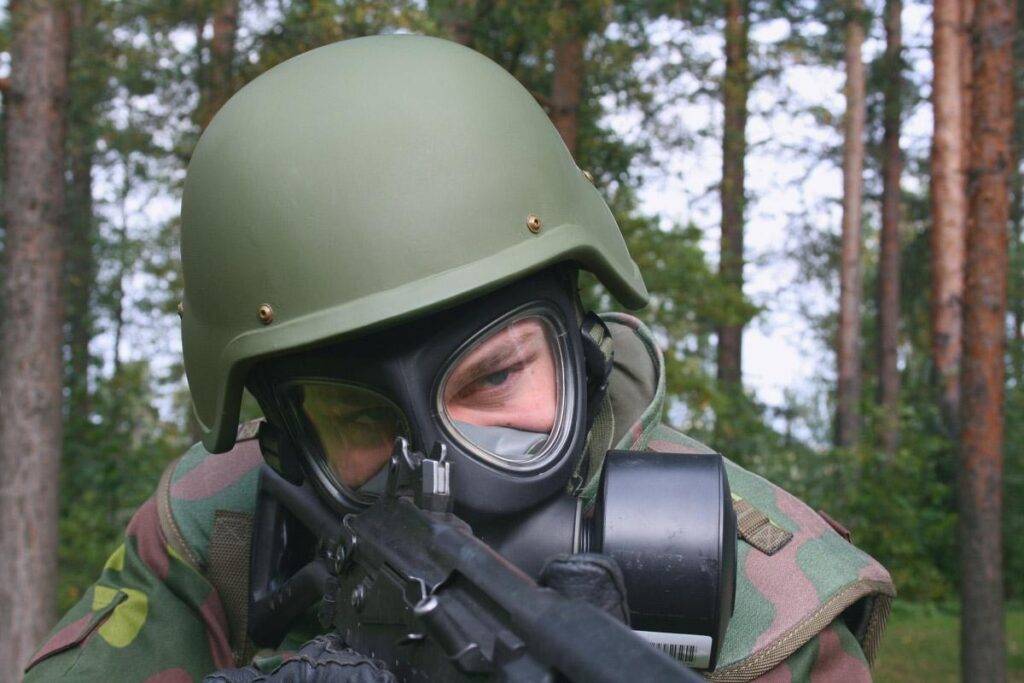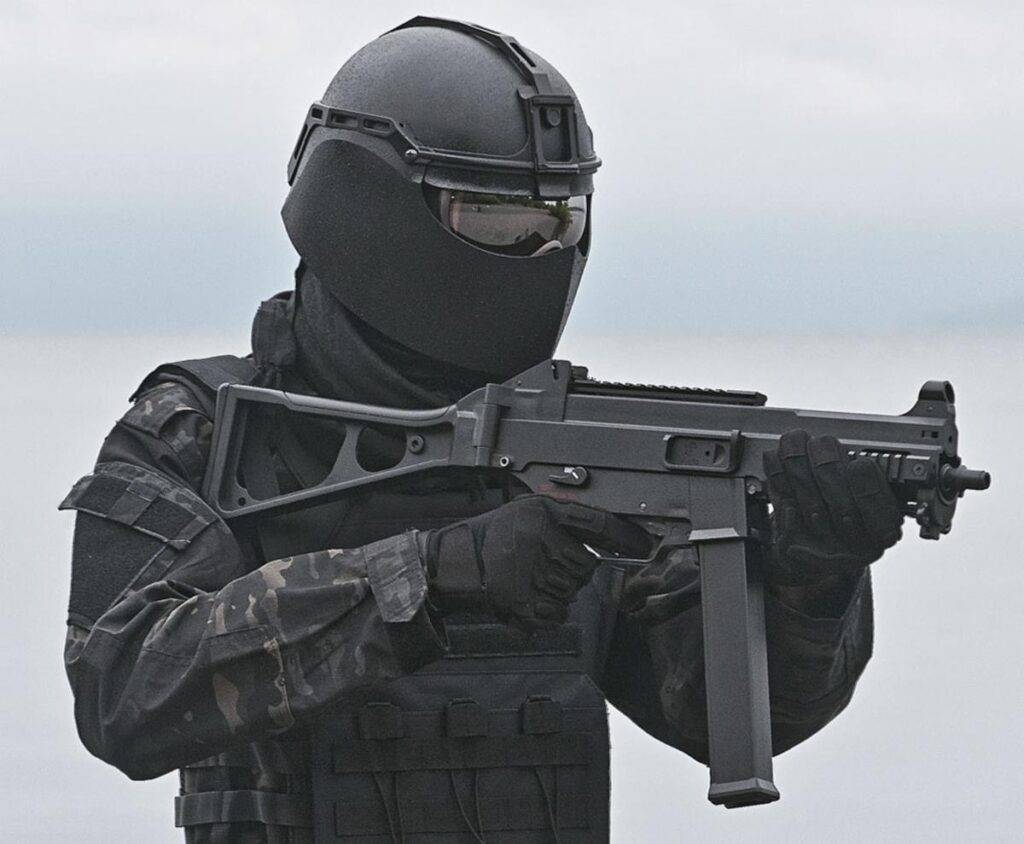Polymer composites are the dominant materials for modern ballistic helmets. Metallic materials, especially steel, are often considered obsolete. But are composite materials the best choice for every conceivable mission?
By M.Sc. (Tech). Jukka Janhunen, an independent ballistic protection and warfare technology researcher. Mr. Janhunen has a lot of experience in testing ballistic protection helmets and determining their head injury potential.

The purpose of a ballistic helmet is not only to stop projectiles but also to prevent serious head injuries or death when the helmet stops a projectile. To select the best helmet for the job at hand requires knowledge of the threat projectiles and the dynamic behaviour of the ballistic shell. The goal is to minimize energy transfer to the head during ballistic impact.
Energy is transferred to the head when the ballistic shell bulges excessively and makes contact with the skull. This can lead to serious injuries or even death in most severe cases. Contact injuries are not the only type of injuries a person can suffer from a ballistic impact. The other injury mechanism is called inertial injuries which are caused by the sudden flop down of the head. This can cause brain tissue damage and cervical spine injuries. Angular acceleration is considered to be more damaging to brain tissue than linear acceleration. Both acceleration components are present in practical impact situations.
The first composite helmets introduced at the beginning of 1980s were made of para-aramid fibres like Kevlar. Polyethylene or UHMWPE (Ultra High Molecular Weight Polyethylene) was introduced at a later stage and has become the dominant material for high end ballistic helmets. The problem with composites is that they tend to bulge excessively during ballistic impact when faced with high powered handguns making them less suitable i.e., police forces who face bullets as threat projectiles rather than fragments. Composite helmets were originally meant to stop small fragments, not bullets. In this application they reign and are the best choice for an average soldier.
Metallic materials make the same stopping work at much less bulging than composites. Modern metallic helmets are made of titanium, steel and in some cases aluminium. Titanium helmets are dominant in Europe, but steel is trying to make comeback in the USA. This is no easy feat due to the market dominance of composite helmets. Metallic helmets are mainly used by police forces in short duration mission where maximum protection is required.

The overall attitude towards prevention of head injuries could be at a better level. Most end users only care about the ergonomics of a helmet. Ergonomics are an important viewpoint, because no one wears an uncomfortable helmet, even though it was the safest.
The biggest problem in head injury prevention is that back face deformation (BFD) values in trauma measuring materials (clay and soap) cannot be correlated with sustained injuries. Such medical information does not simply exist. This gives freedom to manufacturers to accept high BFD values. Back face deformation means the indentation depth caused by the helmet’s ballistic shell impacting trauma measuring material.
We really need to star moving away from clay or soap as a measure of trauma. The indentation depth in clay depends strongly on how fast the deformation takes place. Clay is a rate dependent material. This mean that the same indentation depths caused by different strain rates cannot be compared to each other. The transmitted energy levels are not the same.

The right way to go is to use impact force measuring sensors to get force-time curve or simply impulse curve. We have the Ballistic Load Sensing Headform (BLSH), but it needs some refining to become a standard testing method. The data produced by the BLSH headform can be related to biomechanically derived human head tolerance values. It can be used to predict skull fracture.
To sum it all up the selection of the right helmet for the right job requires knowledge of the dynamic deformation characteristics of the helmet’s ballistic shell against threat projectiles. The goal is to minimize impact energy transmission to the head. Ergonomics are as an important consideration when choosing the right helmet. No one wears an uncomfortable helmet no matter how safe it was.
Heavy metallic ballistic helmets are the right way to go for an assault or siege situation where maximum protection is required and when facing a threat from different calibre bullets, including high powered ones. An average soldier benefits the best from composite helmets which are of light weight and good at stopping small fast fragments. Handgun bullets, even high-powered ones, can be stopped, but at a great contact injury risk. Much needs to be done in safety culture to gain better understanding in head injury prevention. You can fracture a bone from your leg, and it will heal, but your head cannot take that kind of beating.


